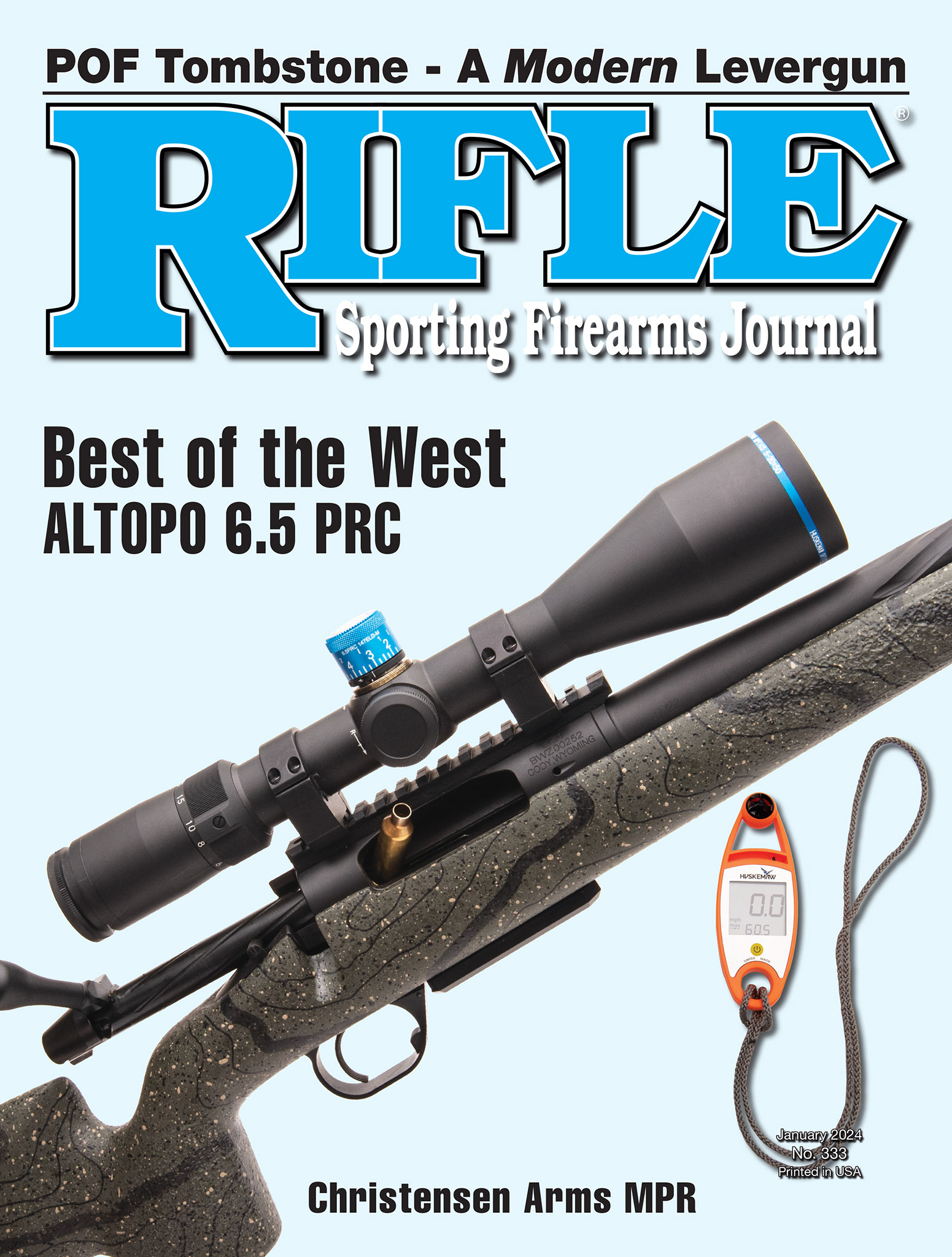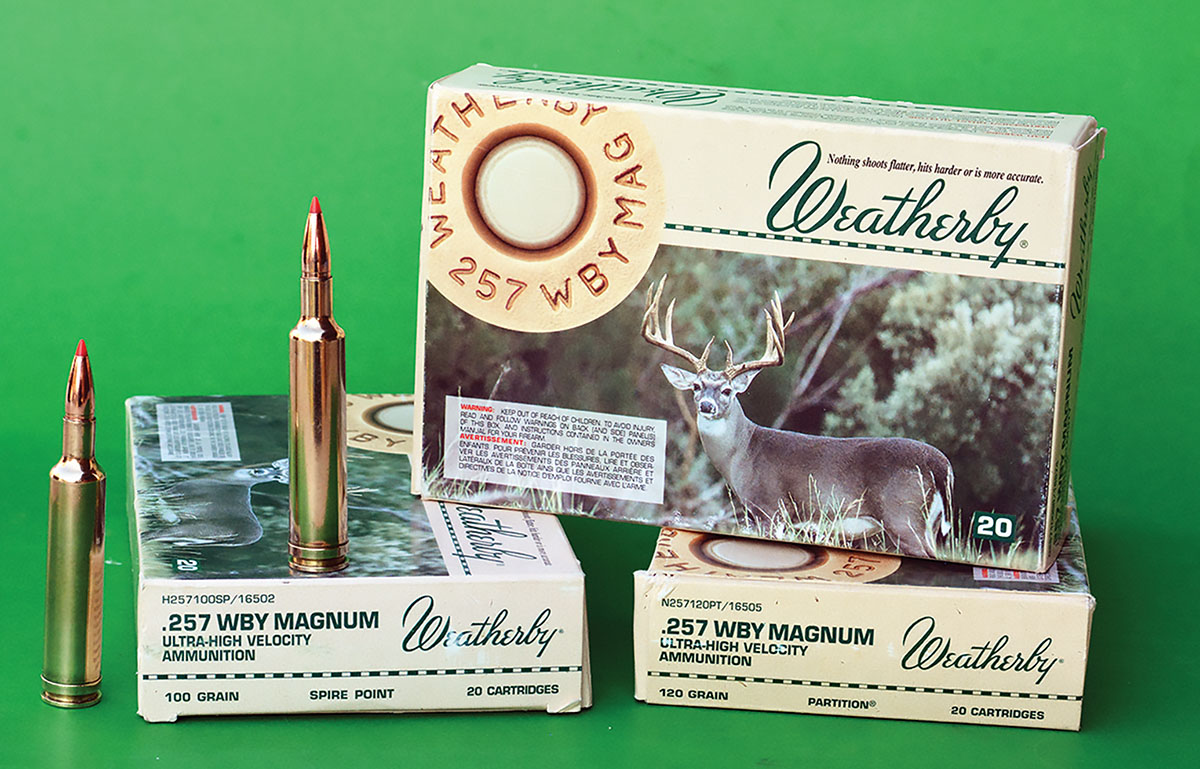
Weatherby offers at least seven different factory loads in 257 Magnum that are designed to meet the needs of hunters and include bullet weights ranging from 80 to 120 grains.
During World War II, a young entrepreneur by the name of Roy Weatherby, began developing a line of proprietary cartridges that were based on the 375/300 H&H Magnum belted case, but were blown out and necked to various calibers. He then built custom rifles based on Mauser Model 98, Winchester Model 70 and several other actions and provided proprietary ammunition to customers.
Records are not always clear, but it appears that Weatherby designed the 257, 270, 7mm and 300 Weatherby Magnums during 1943 and 1944 and was offering commercial ammunition and custom-built rifles by 1945. His timing was perfect, as the war was over, the economy was growing and people wanted to go hunting. Plus, Weatherby’s ultra-high velocity cartridges offered impressive ballistics, but he also knew how to promote his rifles and ammunition that included formally presenting rifles to Hollywood actors and actresses, politicians and world leaders.
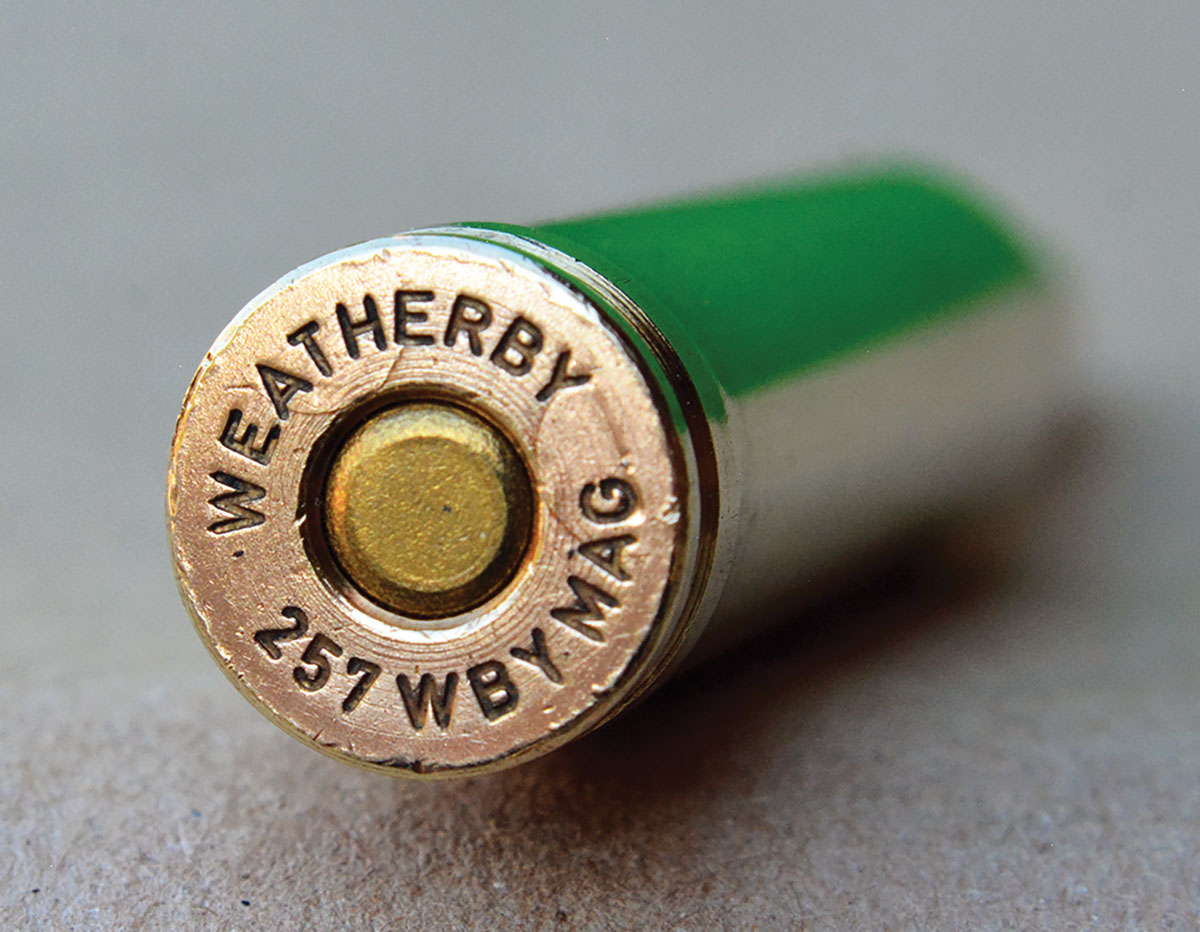
“WEATHERBY 257 WBYMAG” headstamp.
In the years since, Weatherby, Inc. has introduced many more cartridges ranging from the 224 to the potent 460 Magnums and has enjoyed considerable success. Currently, under the direction of Roy’s grandson, Adam Weatherby, operations have been moved to Wyoming and the famous Mark V rifle is now being produced in-house. Also, Weatherby has introduced two completely modern beltless-magnum cartridges including the 6.5 and 338 Weatherby RPM. However, right now, I am going to discuss one of the original cartridges introduced by Roy – the 257 Weatherby Magnum, which is still relevant to modern shooters and hunters.
Traditionally, the most popular original Roy Weatherby cartridge has been the 300, which is no surprise considering the popularity of thirty-caliber cartridges in the U.S. and that magnum versions are highly popular with hunters, especially in the western states where shots can be long and they offer enough muscle to perform well on elk, bear and moose. In more recent years, the 30-378 has gained much popularity. However, the sales of the 257 Weatherby Magnum (formally adopted by the Sporting Arms and Ammunition Manufacturers’ Institute in 1994) have been very strong and have always competed favorably with its big brothers. It should be noted that it was a personal favorite of Roy. He even used one to take a Cape buffalo with a single shot just to prove just how effective this cartridge can be.
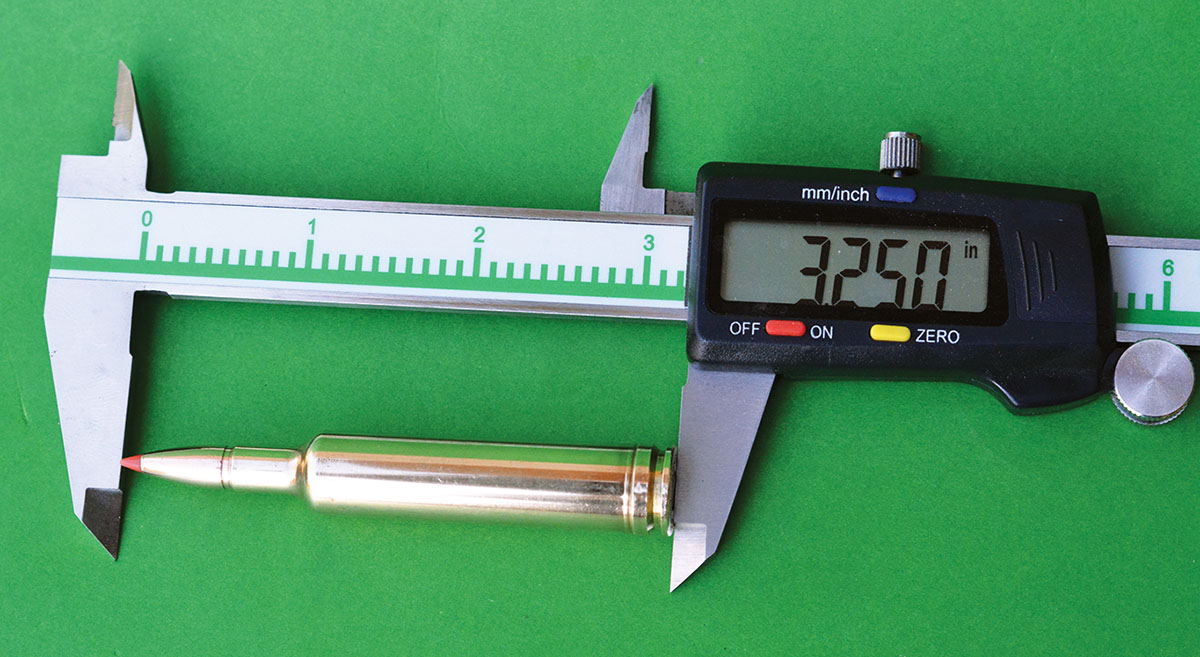
The 257 Weatherby Magnum has a SAAMI maximum overall cartridge length of 3.170 inches. However, some early rifles can enjoy accuracy benefits by seating bullets out to around 3.250 inches, which still functions in standard- length actions.
Unlike many other Weatherby cartridges that have an overall cartridge length of around 3.600 inches, the 257 has a maximum overall length of 3.170 inches and a case length of 2.549 inches. This allows it to be chambered in 30-06-length actions and handloaders can seat bullets out if necessary to optimize accuracy. Despite the case being shortened and blown out (with Roy’s unique double-radius shoulder) from the 375/300 H&H parent case, the 257 is a significant overbore cartridge. With the slowest burning powders available at the end of World War II such as IMR-4350, it gave impressive performance; however, today we have slower burning powders that serve to further increase accuracy and velocity. In short, it is a screamer! In fact, in referencing factory loads, it offers the flattest trajectory at 500 yards of all cartridges in the Weatherby product line, including the fire-breathing 6.5-300. For reference, the Barnes 80-grain TTSX boasts of a muzzle velocity of 3,870 feet per second (fps). With a 300-yard zero, it is only dropping 17.4 inches at 500 yards.
In a nutshell, modern trends with long-range cartridges and bullets have been to increase barrel twist rates (aka fast twist) for a given caliber, utilize heavy-for-caliber bullets that have incredibly high ballistic coefficients (BC) and that typically have a muzzle velocity of between 2,500 fps and rarely exceed 3,100 fps, as those long, ultra-high BC bullets do not stabilize properly at higher velocities. Cartridges have generally become beltless and feature a comparatively fat case, with a short or moderate powder column and usually have a 30- to 35-degree shoulder and generally offer very low extreme spreads, which is essential for extreme long-range work. These cartridges and bullets are very well designed, truly amazing and can deliver remarkable accuracy at 1,000 yards and beyond.
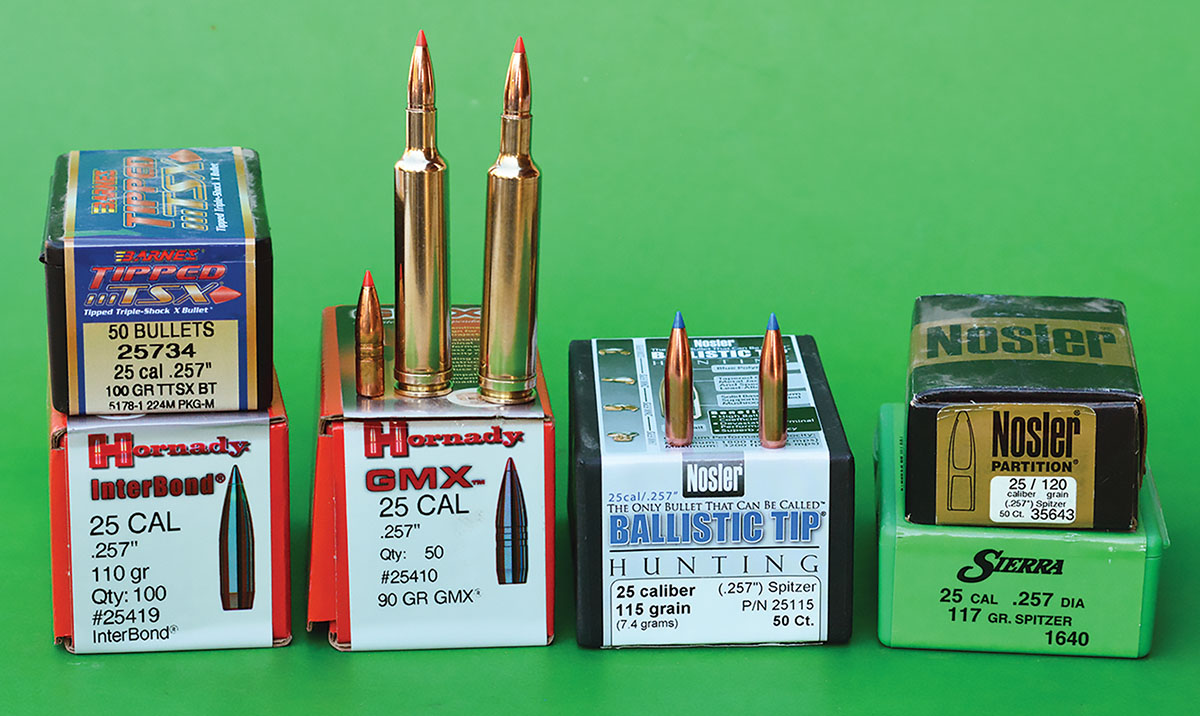
A wide variety of top-notch hunting bullets are available for the 257 Weatherby Magnum.
For whatever my opinion may be worth, it is based on a lifetime of hunting in almost all U.S. states and many countries around the world, but shooting steel, paper targets or varmints at distances of around 1,000 yards is great. However, there are many who promote shooting big game at that distance. In short, unless someone is a professional shooter that spends day in and day out shooting and practicing and doing virtually nothing else, there are way too many variables to reliably take big game at such extreme instances. Just to name a few; unlike target ranges there are no spotting shots to get dialed in. Changing winds, temperatures and other conditions will change bullet impact. The direction of the earth’s rotation in relation to the path of the bullet can make a significant point of impact change. From the instant the trigger breaks until the bullet arrives at the target, the animal can (and often does) move resulting in a complete miss, or worse – a wounded animal and my experience is that very few hunters have the skill or the tenacity to follow-up (that can take days) to find and finish a wounded animal.
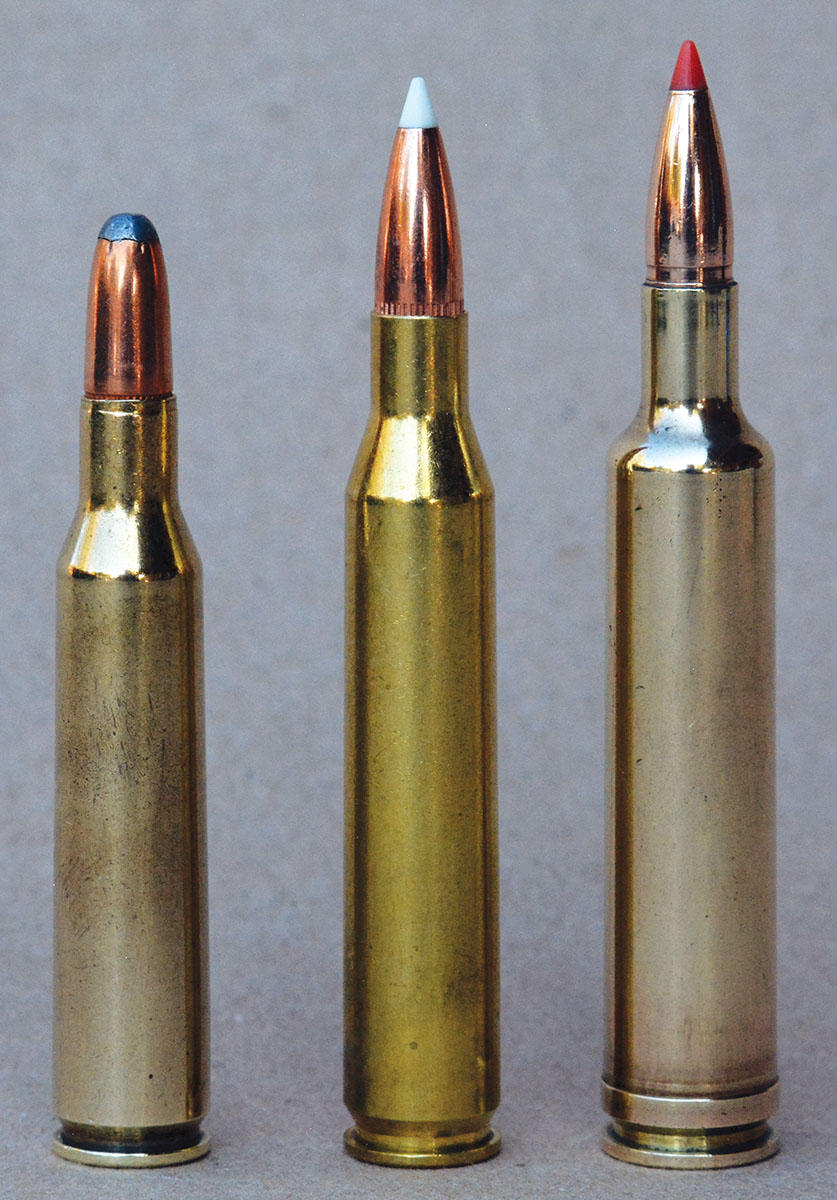
The 257 Weatherby Magnum offers notably greater powder capacity and higher velocities than other popular .25-caliber cartridges. Shown from left to right: 257 Roberts, 25-06 Remington and 257 Weatherby Magnum.
By far, the vast majority of big game is taken within 200 yards, and almost all is taken inside 500 yards. Beyond that distance, the risk of wounding animals increases notably, regardless of the hunters’ skill or the capability of a particular cartridge. So back to the 257 Weatherby Magnum; few cartridges can match its ultra-flat trajectory and short time of flight at distances of 500 yards, even state-of-the-art cartridges designed for extremely long-range shooting. In fact, the 257 offers a significant advantage at that distance and even well beyond that range before slower cartridges with ultra-high ballistic coefficient (BC) bullets can overtake it. It is hard to argue that the 257 is a truly outstanding hunting cartridge for medium-sized game such as deer, antelope, wolves or mountain goats in open or mountainous country.
The standard 257 barrel twist rate is 1:10 inches, which is best matched to bullets ranging from 75 to 120 grains. While bullets of this weight can offer respectable ballistic coefficients up to .453 G1 (Nosler 115-grain Ballistic Tip), they cannot match the figures of long, heavy-for-caliber, low-drag bullets. But again, at the above mentioned reasonable hunting distances of around 500 yards or less, the lower BC associated with .25-caliber bullets is of little importance. Often, when ranging an animal in the field under poor light, some range finders will not take a reading, so a nearby rock, tree or other object must be lasered in order to get an approximate reading. Under these circumstances of not knowing an exact distance, the 257’s flat trajectory will help compensate for errors, which is an advantage when compared to cartridges with lower velocities.
In addition to its laser-like trajectory, the 257 offers moderate recoil that helps many hunters to better place their shots. As to accuracy, a few years back I tested a new out-of-the-box Weatherby Mark V that when fired with factory loaded ammunition containing the Nosler 115-grain Ballistic Tip bullet pushed to 3,400 fps, several five-shot groups hovered between ½ to ¾ inch at 100 yards. A Weatherby Vanguard has produced similar accuracy several times while developing handload data.
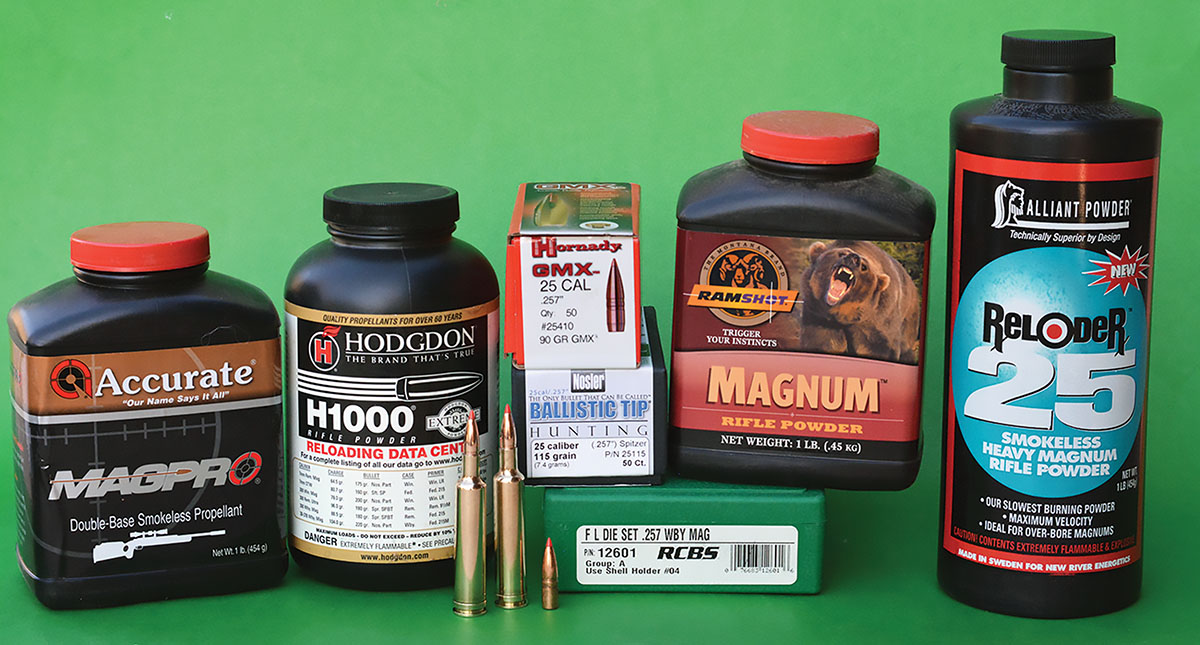
The 257 Weatherby Magnum has significant overbore and performs best with slow-burning powders.
While there are many outstanding factory loads from Weatherby, the 257 can be handloaded for even greater accuracy and fully duplicate or even exceed factory load velocities. As indicated, it thrives on slow-burning powders such as Alliant Reloder 25, Hodgdon H-1000, Ramshot Magnum, Accurate Magpro and other powders with similar burn rates (see Table I for load data).
Detractors of the 257 might point out that the overbore capacity can result in a short barrel life. However, avoiding overheating of the barrel and keeping it clean will help to extend barrel life, and modern hammer-forged barrels will last much longer than is commonly believed. Barrel life is certainly long enough to enjoy many hunts and shooting sessions. Regardless, very few commercially available sporting cartridges can match the 257’s remarkable performance. Eighty years ago Roy’s 257 was phenomenal, or what he referred to as “Tomorrow’s Rifles and Cartridges Today.” With new powders and bullets, it is more versatile, faster, flatter shooting and more accurate than ever before. In spite of fierce competition from newer cartridges, it is still an outstanding and phenomenal hunting cartridge.






.jpg)
.jpg)


